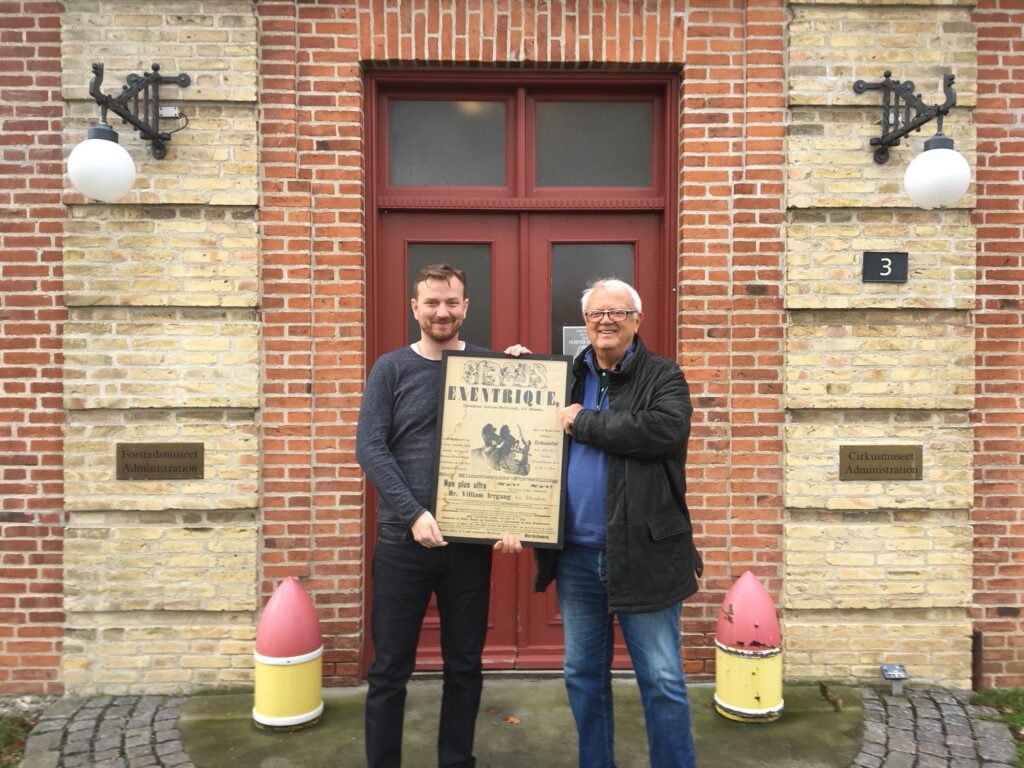The History of the Museum
When did the Circus Museum open?
The Circus Museum opened its doors in 2001, in the former military building in Avedørelejren. From 2004 onwards, the Museum has been run by Hvidovre Municipality.
How did it all start?
The cornerstone of the museum is the juggler and collector Ølund “Barly” Jacobsen’s (1917–1999) large collection of circus memorabilia.
How did Barly’s collection come about?
Barly was Ølund’s performing name, and he was an almost manic collector. As a child, he saw a juggler performing, and there and then, he decided to learn that skill. He bartered for some juggling props and began practicing. In the year 1937, he had his big break, when performing in the talent show “Kunstnerforum” on the variety stage, National Scala. After that, he was a professional performer. Throughout his carreer he met many artists and impresarios, who donated everything from photos to costumes to him, as they learned of his collector’s nature. When Barly died, his collection amounted to over 100,000 photos, posters, costumes, props etc. from the circus universe.
Was the collection well-known?
In the 1970s, Barly was introduced to the general public through a TV-programme called “Cirkusklubben”. In it, he told stories about items from his collection. In 1992, he received the culture award from Københavns Amt (Copenhagen Municipality today), and the same year, the municipality launched a project aimed at recording the collection. At the same time, a society called “Barlys venner” (Barly’s friends) was formed – today, it is known as Danske Cirkusvenner (Danish Circus Friends). The society wished to put the spotlight on the collection as such. The society, in tandem with the municipality, were both part of the collection ending up in Hvidovre.
Why is the museum located in Hvidovre?
In 1999, Hvidovre Municipality bought the garrison, Avedørelejren, to create a new, attractive district where businesses, culture, and tourism would mix with housing. The municipality was made aware of Barly’s collection, and saw potential in bringing it to its own turf by opening a circus museum. Before that, Hvidovre had arranged a circus festival, to test the potential in the concept.
Were circuses a part of Hvidovre before then?
In Hvidovre, there was already a circus aimed at children and teens, called Cirkus Regnbuebørn (Circus Rainbow-Children – today’s Cirkus Arcus), which gave fine performances granting the kids a feeling of success. So the municipality could see a lot of potential in having a museum where physical activity was a core element as well.
When did the venue for circus training open its doors?
In 2009, Fægtesalen was opened. Fægtesalen is a venue for circus activities and a new, permanent exhibition. It was made possible thanks to donations from Realdania and Arbejdsmarkedets Feriefond.

Is the Museum still growing?
The Museum is still growing. We continuously expand what we offer to our guests, and we often receive items that can develop and bring new stories about the history of the Circus, artistry and jesters in Denmark.